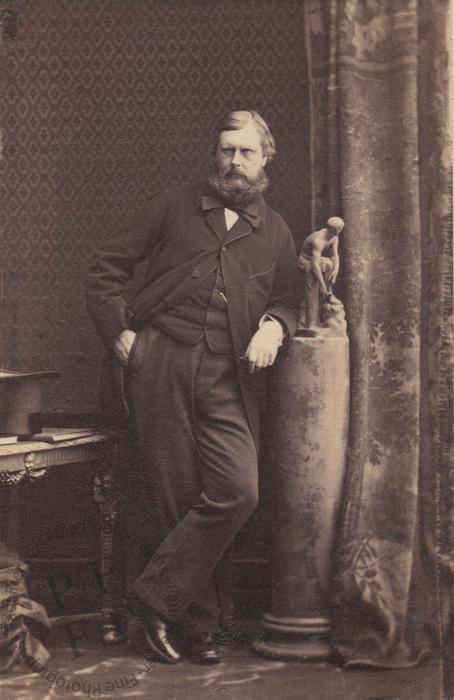Prince Edward of Saxe-Weimar
(1823-1902)
19 February 1860
Volume 2, page 218, sitting number 2164
Born at Bushy House on 11 October 1823, Prince William Augustus Edward of Saxe-Weimar-Eisenach was the son of Prince Bernard of Saxe-Weimar-Eisenach and Princess Ida of Saxe-Meiningen. His mother was the younger sister of Adelaide, later Queen Adelaide, wife of William, Duke of Clarence, later King William IV. Having no children of their own, William and Adelaide treated Edward as their own son and he was, therefore, effectively regarded as a first-cousin to Queen Victoria.
Edward became a Naturalised British Subject, trained at the Royal Military College in Sandhurst and joined the British Army. As an officer in the Grenadier Guards, he saw action during the Crimean War at Alma, the Siege of Sevastopol, Balaclava and Inkerman. He was appointed an ADC to the Queen and received his colonelcy in the Grenadier Guards on 5 October 1855. He subsequently became Major General commanding the Brigade of Guards and General Officer Commanding the Home District in 1870, General Officer Commanding Southern District in October 1878 and Commander-in-Chief, Ireland in October 1885. He was promoted to field marshal in 1897, despite the lack of great military achievments during his career.
On 27 November 1851 he married Lady Augusta Katherine Gordon-Lennox, a daughter of Charles Gordon-Lennox, 5th Duke of Richmond. Although Lady Augusta was the daughter of a duke who was one of the richest landowners in Britain, the match was not regarded as an equal one by Prince Edward's German family. The Grand Duke of Saxe-Weimar (Edward's uncle) strictly observed the rules of marriage and the concept of ebenbürtigkeit (equality of birth), which stated that members of reigning families could only marry amongst themselves. Consequently, the marriage was morganatic and the Grand Duke conferred the title of Countess von Dornburg on Lady Augusta the day before the marriage. Queen Victoria regarded this as absurd and decreed that, in Britain, Lady Augusta should be styled Princess Edward of Saxe-Weimar. In 1866 the Queen granted them both the style of Royal Highness. Their marriage produced no children.
Prince Edward died on 16 November 1902 at his residence in London’s Portland Place. He was buried in Chichester Cathedral in the crypt of his wife's family, the dukes of Richmond and Lennox.
According to his obituary in The Times: ‘He could not be justly regarded as a great soldier, but he was always acknowledged to be a good one, and will be sincerely regretted by those who served under him. […] Without the advantages of birth which he possessed Prince Edward of Saxe-Weimar might not have attained to such a succession of honours and rewards, but he did not fail to dignify the appointments which he held, and in similar circumstances men of superior ability might have achieved far less solid and admitted success’ (The Times, 17 November 1902).

